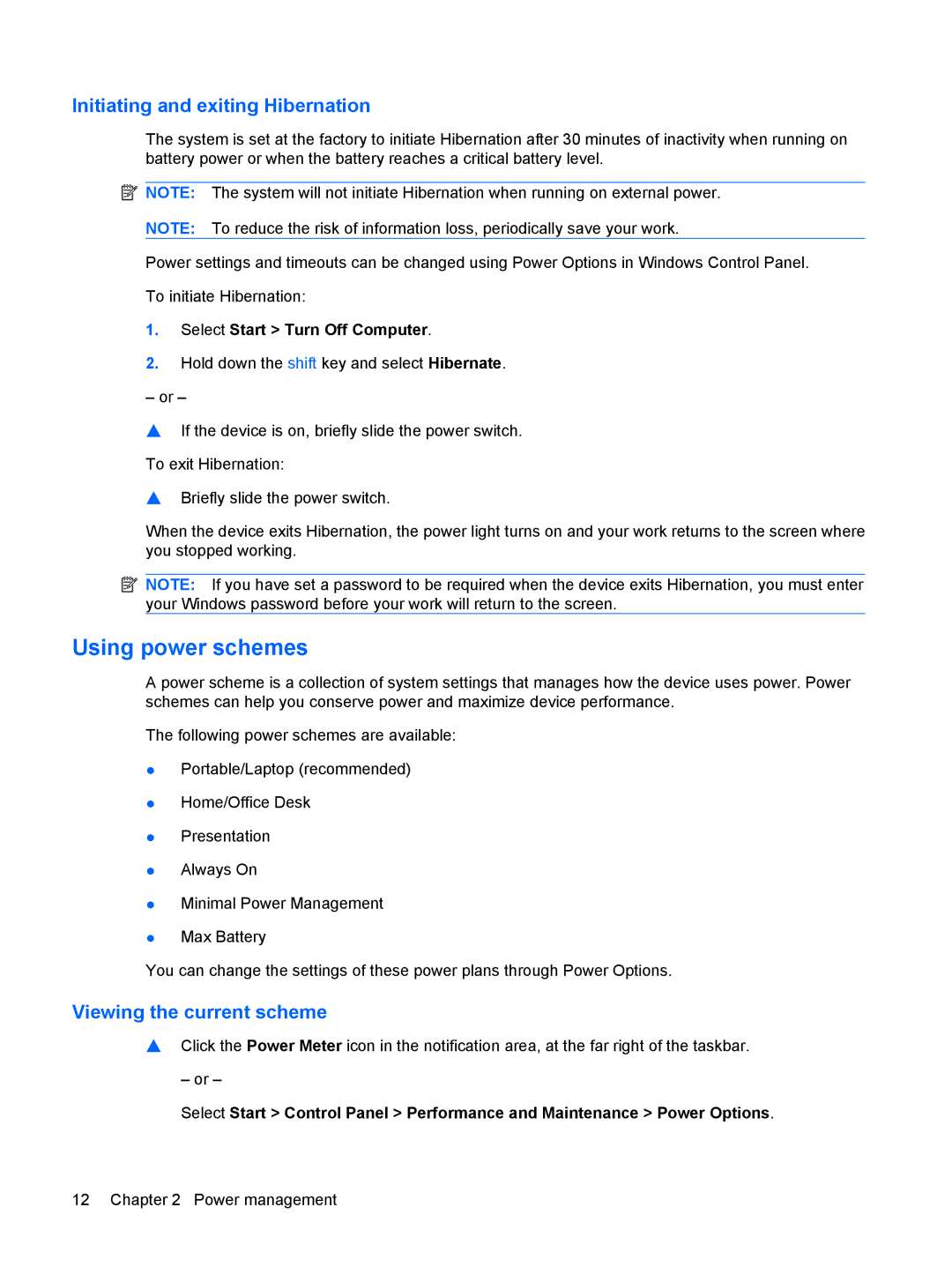
Initiating and exiting Hibernation
The system is set at the factory to initiate Hibernation after 30 minutes of inactivity when running on battery power or when the battery reaches a critical battery level.
![]() NOTE: The system will not initiate Hibernation when running on external power.
NOTE: The system will not initiate Hibernation when running on external power.
NOTE: To reduce the risk of information loss, periodically save your work.
Power settings and timeouts can be changed using Power Options in Windows Control Panel.
To initiate Hibernation:
1.Select Start > Turn Off Computer.
2.Hold down the shift key and select Hibernate.
– or –
▲If the device is on, briefly slide the power switch. To exit Hibernation:
▲Briefly slide the power switch.
When the device exits Hibernation, the power light turns on and your work returns to the screen where you stopped working.
![]() NOTE: If you have set a password to be required when the device exits Hibernation, you must enter your Windows password before your work will return to the screen.
NOTE: If you have set a password to be required when the device exits Hibernation, you must enter your Windows password before your work will return to the screen.
Using power schemes
A power scheme is a collection of system settings that manages how the device uses power. Power schemes can help you conserve power and maximize device performance.
The following power schemes are available:
●Portable/Laptop (recommended)
●Home/Office Desk
●Presentation
●Always On
●Minimal Power Management
●Max Battery
You can change the settings of these power plans through Power Options.
Viewing the current scheme
▲Click the Power Meter icon in the notification area, at the far right of the taskbar.
– or –
Select Start > Control Panel > Performance and Maintenance > Power Options.
12 Chapter 2 Power management
